
Lauren Slosky
@laurenslosky.bsky.social
Neuropharmacologist | Assistant Prof at the University of Minnesota | New PI interested in GPCRs, addiction biology & drug discovery | 🔬 ➡️ 🐭
Pinned

Designing allosteric modulators to change GPCR G protein subtype selectivity - Nature
Studies of the G-protein-coupled receptor NTSR1 show that the G protein selectivity of this receptor can be modified by small molecules, enabling the design of drugs that work by switching receptor su...
www.nature.com
Now online @nature.com!
Want to change the consequences of receptor activation?
Small molecules binding the GPCR-transducer interface change G protein subtype preference in predictable ways, enabling rational drug design 💥
So many new possibilities! 🧪🧠🟦
www.nature.com/articles/s41...
🧵👇
Want to change the consequences of receptor activation?
Small molecules binding the GPCR-transducer interface change G protein subtype preference in predictable ways, enabling rational drug design 💥
So many new possibilities! 🧪🧠🟦
www.nature.com/articles/s41...
🧵👇
Reposted by Lauren Slosky
Multiple Allosteric Sites Allow for Synergistic Enhancement of GPCR Signaling https://www.biorxiv.org/content/10.1101/2025.10.21.683604v1
October 23, 2025 at 2:18 AM
Multiple Allosteric Sites Allow for Synergistic Enhancement of GPCR Signaling https://www.biorxiv.org/content/10.1101/2025.10.21.683604v1
Thank you SBP for the wonderful highlight! And thank you @behnoushhajian.bsky.social for the beautiful artwork! ✨
Scientists at Sanford Burnham Prebys, the University of Minnesota and Duke University report in Nature that “biased modulators” can target GPCRs more precisely—expanding potential drug targets and reducing side effects. www.nature.com/articles/s41...
November 4, 2025 at 3:44 PM
Thank you SBP for the wonderful highlight! And thank you @behnoushhajian.bsky.social for the beautiful artwork! ✨
Reposted by Lauren Slosky
Scientists at Sanford Burnham Prebys, the University of Minnesota and Duke University report in Nature that “biased modulators” can target GPCRs more precisely—expanding potential drug targets and reducing side effects. www.nature.com/articles/s41...
November 3, 2025 at 8:07 PM
Scientists at Sanford Burnham Prebys, the University of Minnesota and Duke University report in Nature that “biased modulators” can target GPCRs more precisely—expanding potential drug targets and reducing side effects. www.nature.com/articles/s41...
Reposted by Lauren Slosky
Newly designed molecules acting as "molecular glues" and "bumpers" can selectively rewire GPCR signaling, offering a pathway to more precise and potentially safer medicines. doi.org/g98xfp

'Molecular glues' and 'bumpers' offer new hope for precision medicines
New research led by the University of Minnesota Medical School demonstrates that molecules acting as "molecular bumpers" and "molecular glues" can rewire G protein-coupled receptor (GPCR) signaling, turning the cell's busiest receptors into precision tools—opening the door to a new generation of safer, smarter medicines.
medicalxpress.com
November 2, 2025 at 8:46 PM
Newly designed molecules acting as "molecular glues" and "bumpers" can selectively rewire GPCR signaling, offering a pathway to more precise and potentially safer medicines. doi.org/g98xfp
Wow! Thank you @nature.com for highlighting our recent work in this nice Research Brief! 🧪🧠🟦
A broad overview and glimpse behind the making of the paper 👨🍳👩🍳
A big thank you to John McCorvy for weighing in!!
Brief 👉 www.nature.com/articles/d41...
Paper 👉 www.nature.com/articles/s41...
A broad overview and glimpse behind the making of the paper 👨🍳👩🍳
A big thank you to John McCorvy for weighing in!!
Brief 👉 www.nature.com/articles/d41...
Paper 👉 www.nature.com/articles/s41...

Molecular ‘glues’ and ‘bumpers’ on receptors can bias signalling inside the cell
Small molecules that bind to G-protein-coupled receptors’ intracellular pockets can be designed to have pathway-selective effects.
www.nature.com
October 31, 2025 at 8:07 PM
Wow! Thank you @nature.com for highlighting our recent work in this nice Research Brief! 🧪🧠🟦
A broad overview and glimpse behind the making of the paper 👨🍳👩🍳
A big thank you to John McCorvy for weighing in!!
Brief 👉 www.nature.com/articles/d41...
Paper 👉 www.nature.com/articles/s41...
A broad overview and glimpse behind the making of the paper 👨🍳👩🍳
A big thank you to John McCorvy for weighing in!!
Brief 👉 www.nature.com/articles/d41...
Paper 👉 www.nature.com/articles/s41...
Reposted by Lauren Slosky
Nature research paper: Designing allosteric modulators to change GPCR G protein subtype selectivity
go.nature.com/49jaBQS
go.nature.com/49jaBQS

Designing allosteric modulators to change GPCR G protein subtype selectivity - Nature
Studies of the G-protein-coupled receptor NTSR1 show that the G protein selectivity of this receptor can be modified by small molecules, enabling the design of drugs that work by switching receptor subtype preference.
go.nature.com
October 28, 2025 at 2:36 PM
Nature research paper: Designing allosteric modulators to change GPCR G protein subtype selectivity
go.nature.com/49jaBQS
go.nature.com/49jaBQS
Now online @nature.com!
Want to change the consequences of receptor activation?
Small molecules binding the GPCR-transducer interface change G protein subtype preference in predictable ways, enabling rational drug design 💥
So many new possibilities! 🧪🧠🟦
www.nature.com/articles/s41...
🧵👇
Want to change the consequences of receptor activation?
Small molecules binding the GPCR-transducer interface change G protein subtype preference in predictable ways, enabling rational drug design 💥
So many new possibilities! 🧪🧠🟦
www.nature.com/articles/s41...
🧵👇

Designing allosteric modulators to change GPCR G protein subtype selectivity - Nature
Studies of the G-protein-coupled receptor NTSR1 show that the G protein selectivity of this receptor can be modified by small molecules, enabling the design of drugs that work by switching receptor su...
www.nature.com
October 27, 2025 at 8:50 PM
Now online @nature.com!
Want to change the consequences of receptor activation?
Small molecules binding the GPCR-transducer interface change G protein subtype preference in predictable ways, enabling rational drug design 💥
So many new possibilities! 🧪🧠🟦
www.nature.com/articles/s41...
🧵👇
Want to change the consequences of receptor activation?
Small molecules binding the GPCR-transducer interface change G protein subtype preference in predictable ways, enabling rational drug design 💥
So many new possibilities! 🧪🧠🟦
www.nature.com/articles/s41...
🧵👇
Reposted by Lauren Slosky
Final version of this work is now live! Mitch developed this model and found that a history of chronic neuropathic pain in the SNI model facilitates pain-induced reinstatement of ethanol CPP in male mice.
www.sciencedirect.com/science/arti...
www.sciencedirect.com/science/arti...

October 1, 2025 at 2:39 PM
Final version of this work is now live! Mitch developed this model and found that a history of chronic neuropathic pain in the SNI model facilitates pain-induced reinstatement of ethanol CPP in male mice.
www.sciencedirect.com/science/arti...
www.sciencedirect.com/science/arti...
Reposted by Lauren Slosky
Excited to present our newest preprint on the structure-function relationship of anaphylatoxin complement receptors. A casual number of 19 structures deciphering ligand recognition mechanisms, G protein/arrestin and species specific signaling. Please check it out! 🧪💊 www.biorxiv.org/content/bior...

May 31, 2025 at 3:09 AM
Excited to present our newest preprint on the structure-function relationship of anaphylatoxin complement receptors. A casual number of 19 structures deciphering ligand recognition mechanisms, G protein/arrestin and species specific signaling. Please check it out! 🧪💊 www.biorxiv.org/content/bior...
Reposted by Lauren Slosky
Check out our latest! Studies led by the amazing Megan Brickner - she finds really interesting patterns of dopamine signaling in the basolateral amygdala that report the emotional salience of sensory state transitions. These are largely non-associative, value-free signals, in contrast to classic DA.
Basolateral amygdala dopamine transmits a nonassociative emotional salience signal https://www.biorxiv.org/content/10.1101/2025.05.15.654323v1
May 17, 2025 at 4:18 PM
Check out our latest! Studies led by the amazing Megan Brickner - she finds really interesting patterns of dopamine signaling in the basolateral amygdala that report the emotional salience of sensory state transitions. These are largely non-associative, value-free signals, in contrast to classic DA.
Reposted by Lauren Slosky
If anyone who had a grant terminated (at Harvard or elsewhere) would like to partner with my scicomm channel (LetTheDataSpeak across platforms), I’m happy to work with you.
I will feature an elevator pitch of your exciting science, then end with “this project was terminated” and a call to action.
I will feature an elevator pitch of your exciting science, then end with “this project was terminated” and a call to action.
May 17, 2025 at 5:58 PM
If anyone who had a grant terminated (at Harvard or elsewhere) would like to partner with my scicomm channel (LetTheDataSpeak across platforms), I’m happy to work with you.
I will feature an elevator pitch of your exciting science, then end with “this project was terminated” and a call to action.
I will feature an elevator pitch of your exciting science, then end with “this project was terminated” and a call to action.
Reposted by Lauren Slosky
Excited to share this new publication in Behavioural Pharmacology! Check it out via the link below. Congratulations to first author Dr. Nina Beltran, and the whole team including our collaborator Dr. Vanessa Minervini! journals.lww.com/behaviouralp... @ninabeltran.bsky.social

The effects of high fat diet consumption on... : Behavioural Pharmacology
iet exacerbates opioid-induced constipation, male and female Sprague–Dawley rats (n = 8/diet/sex) were fed either a low fat (standard) diet, a high fat/high carbohydrate diet, or a ketogenic diet. Rat...
journals.lww.com
May 14, 2025 at 11:54 PM
Excited to share this new publication in Behavioural Pharmacology! Check it out via the link below. Congratulations to first author Dr. Nina Beltran, and the whole team including our collaborator Dr. Vanessa Minervini! journals.lww.com/behaviouralp... @ninabeltran.bsky.social
Reposted by Lauren Slosky
Surgeries are a common source of #pain in the clinic. Check out our new paper published today in PNAS exploring how stress can lead to enhanced pain after surgery. We found that targeting prolactin can improve outcomes in females. @pnas.org
www.pnas.org/doi/10.1073/...
www.pnas.org/doi/10.1073/...

A prolactin-targeting antibody to prevent stress-induced peripheral nociceptor sensitization and female postoperative pain | PNAS
Scheduled surgeries elicit stress in many patients. Levels of preoperative stress,
anxiety, and female gender are known risk factors for increased ...
www.pnas.org
May 13, 2025 at 1:23 AM
Surgeries are a common source of #pain in the clinic. Check out our new paper published today in PNAS exploring how stress can lead to enhanced pain after surgery. We found that targeting prolactin can improve outcomes in females. @pnas.org
www.pnas.org/doi/10.1073/...
www.pnas.org/doi/10.1073/...
Reposted by Lauren Slosky
Hi Science colleagues! Does anyone have recommendations for companies selling custom cannula for intracranial microinfusions. Plastics 1 has gone through so many transformations, now only a limited off the shelf inventory is available.
April 28, 2025 at 2:26 PM
Hi Science colleagues! Does anyone have recommendations for companies selling custom cannula for intracranial microinfusions. Plastics 1 has gone through so many transformations, now only a limited off the shelf inventory is available.
Reposted by Lauren Slosky
Published an op-ed for @cnn.com: “Nobel laureate: I owe America my success. Today, its scientific future is in danger.”
A personal reflection on what’s at stake as science funding gets slashed. I’d be grateful if you could amplify both in and beyond the science world.
www.cnn.com/2025/04/09/h...
A personal reflection on what’s at stake as science funding gets slashed. I’d be grateful if you could amplify both in and beyond the science world.
www.cnn.com/2025/04/09/h...
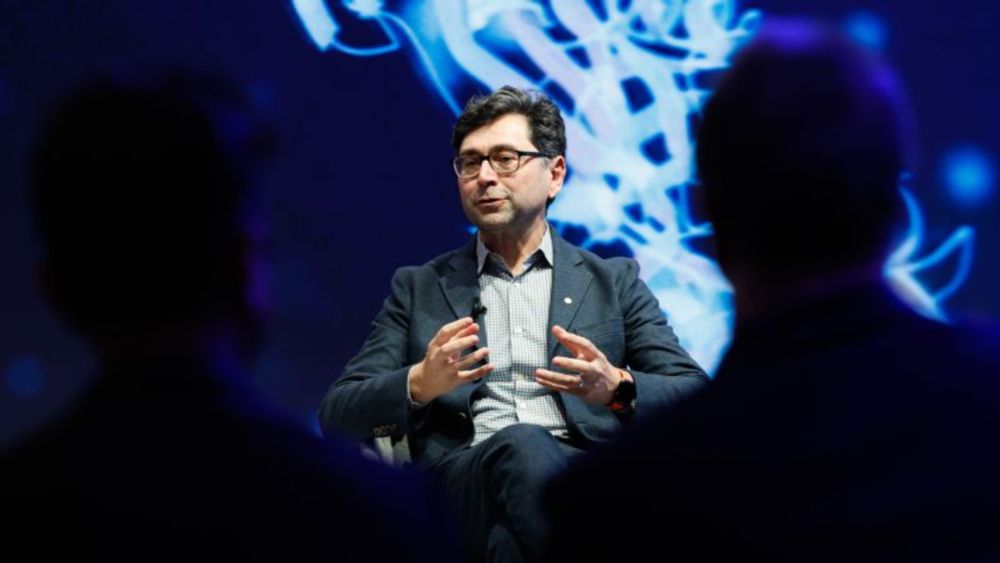
Nobel laureate: I owe America my success. Today, its scientific future is in danger | CNN
Dr. Ardem Patapoutian says he watches “with deep sadness as the United States’ remarkable scientific enterprise, which took generations of hard work and national investment to build, faces a concerted...
www.cnn.com
April 9, 2025 at 11:30 AM
Published an op-ed for @cnn.com: “Nobel laureate: I owe America my success. Today, its scientific future is in danger.”
A personal reflection on what’s at stake as science funding gets slashed. I’d be grateful if you could amplify both in and beyond the science world.
www.cnn.com/2025/04/09/h...
A personal reflection on what’s at stake as science funding gets slashed. I’d be grateful if you could amplify both in and beyond the science world.
www.cnn.com/2025/04/09/h...
Reposted by Lauren Slosky
GPCR allosterism, a popular #ASPET2025 session chaired by @laurenslosky.bsky.social & Laura Wingler.

April 4, 2025 at 5:51 PM
GPCR allosterism, a popular #ASPET2025 session chaired by @laurenslosky.bsky.social & Laura Wingler.
Reposted by Lauren Slosky
Working with an interdisciplinary team, we have developed a website to communicate how the White House's proposed cuts to health research would cause losses of $16B and 68,500 jobs.
Find out how your community may be impacted.
Explore more at SCIMaP: scienceimpacts.org
a 🧵
Find out how your community may be impacted.
Explore more at SCIMaP: scienceimpacts.org
a 🧵
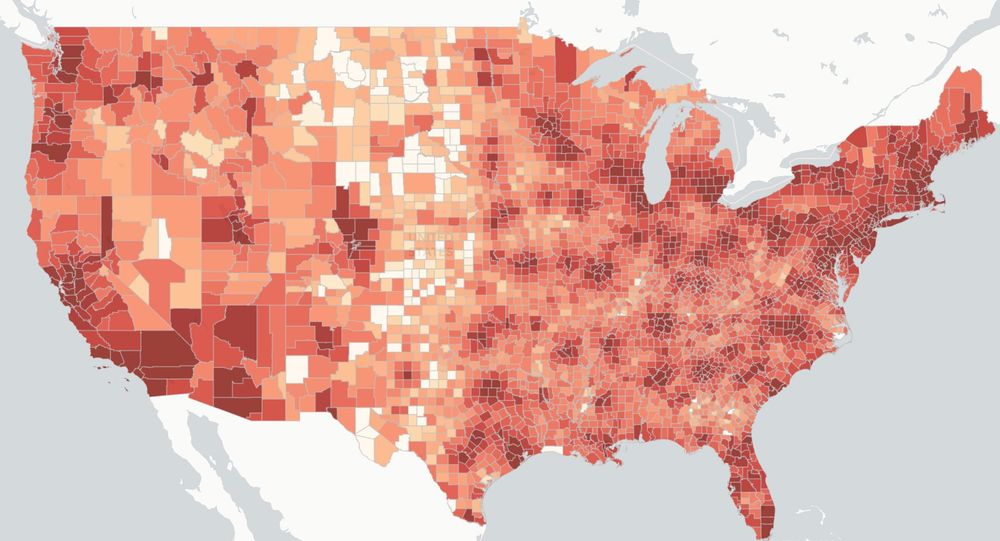
March 28, 2025 at 2:15 AM
Working with an interdisciplinary team, we have developed a website to communicate how the White House's proposed cuts to health research would cause losses of $16B and 68,500 jobs.
Find out how your community may be impacted.
Explore more at SCIMaP: scienceimpacts.org
a 🧵
Find out how your community may be impacted.
Explore more at SCIMaP: scienceimpacts.org
a 🧵
Reposted by Lauren Slosky
Excited to see this NIDA supported work from lab PhD student Kasey Brida officially published! Kasey identified a marker of neurons that are responsive to the psychostimulant drug cocaine, and discovered that this marker is essential for cocaine reward.
www.science.org/doi/10.1126/...
www.science.org/doi/10.1126/...
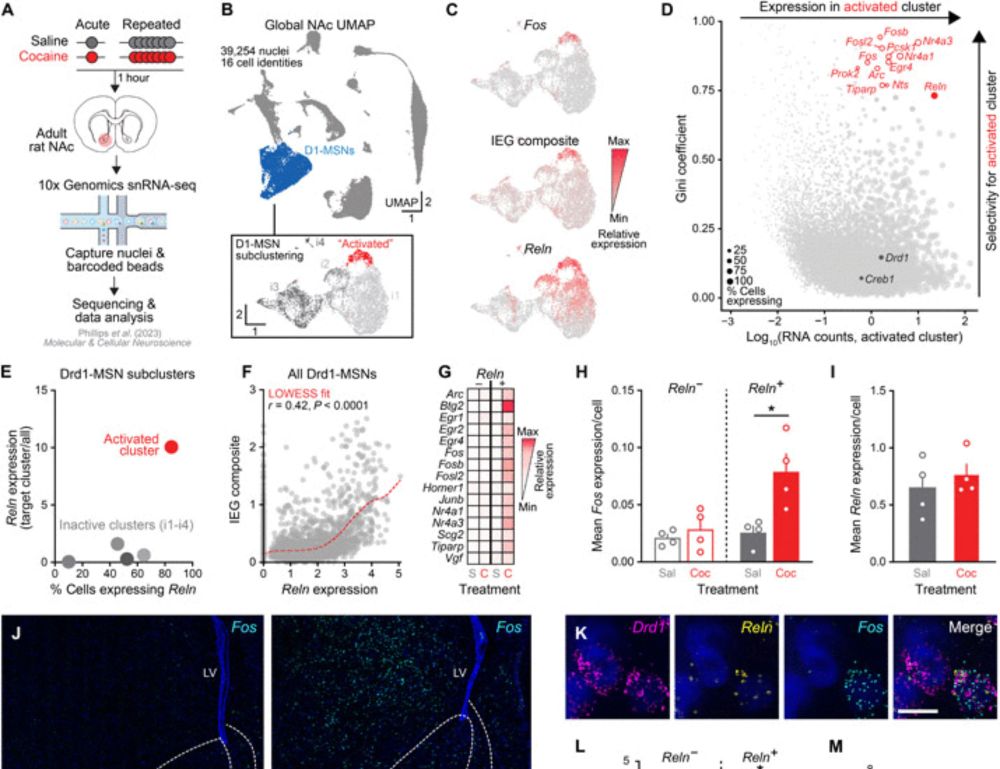
Reelin marks cocaine-activated striatal neurons, promotes neuronal excitability, and regulates cocaine reward
Reelin is a critical mechanistic link between neuronal activation and cocaine-induced behavioral adaptations.
www.science.org
March 27, 2025 at 10:08 PM
Excited to see this NIDA supported work from lab PhD student Kasey Brida officially published! Kasey identified a marker of neurons that are responsive to the psychostimulant drug cocaine, and discovered that this marker is essential for cocaine reward.
www.science.org/doi/10.1126/...
www.science.org/doi/10.1126/...
Reposted by Lauren Slosky
Check out our latest - we found that complex terpene extracts from Cannabis had similar pain relief and cannabimimetic effects as purified single terpenes, and also via the same target, the adenosine a2a receptor. Free share link! url.usb.m.mimecastprotect.com/s/Uq14CnGWL0...
url.usb.m.mimecastprotect.com
March 26, 2025 at 11:43 PM
Check out our latest - we found that complex terpene extracts from Cannabis had similar pain relief and cannabimimetic effects as purified single terpenes, and also via the same target, the adenosine a2a receptor. Free share link! url.usb.m.mimecastprotect.com/s/Uq14CnGWL0...
Reposted by Lauren Slosky
UAB Neurobiology is hiring up to 4 new tenure-track faculty as part of 3 new open-rank searches. Come join our vibrant, supportive, and growing neuroscience community!
uab.peopleadmin.com/postings/23916
uab.peopleadmin.com/postings/23944
uab.peopleadmin.com/postings/24010
uab.peopleadmin.com/postings/23916
uab.peopleadmin.com/postings/23944
uab.peopleadmin.com/postings/24010
Academic Joint Departments-Open Rank/Tenure-Neurobiology
The University of Alabama at Birmingham (UAB) Heersink School of Medicine invites applications for 4 open-rank faculty positions in the Department of Neurobiology. We are seeking candidates who apply ...
uab.peopleadmin.com
March 11, 2025 at 10:52 PM
UAB Neurobiology is hiring up to 4 new tenure-track faculty as part of 3 new open-rank searches. Come join our vibrant, supportive, and growing neuroscience community!
uab.peopleadmin.com/postings/23916
uab.peopleadmin.com/postings/23944
uab.peopleadmin.com/postings/24010
uab.peopleadmin.com/postings/23916
uab.peopleadmin.com/postings/23944
uab.peopleadmin.com/postings/24010
Reposted by Lauren Slosky
I have been trying to find the time to move away from the polical hellscape we find ourselves in to finish and share a bluetorial about science.
This helps me remember what this is all about.
Ironically, it is about the treatment of pain.
This helps me remember what this is all about.
Ironically, it is about the treatment of pain.

the word irony is written on a white background
ALT: the word irony is written on a white background
media.tenor.com
February 22, 2025 at 10:19 AM
I have been trying to find the time to move away from the polical hellscape we find ourselves in to finish and share a bluetorial about science.
This helps me remember what this is all about.
Ironically, it is about the treatment of pain.
This helps me remember what this is all about.
Ironically, it is about the treatment of pain.
Reposted by Lauren Slosky
Excited to present the result of a fantastic collaborative effort - funded by the National Institutes of Health, including the NIH HEAL Initiative, to develop safer analgesic drugs. www.nature.com/articles/s41...
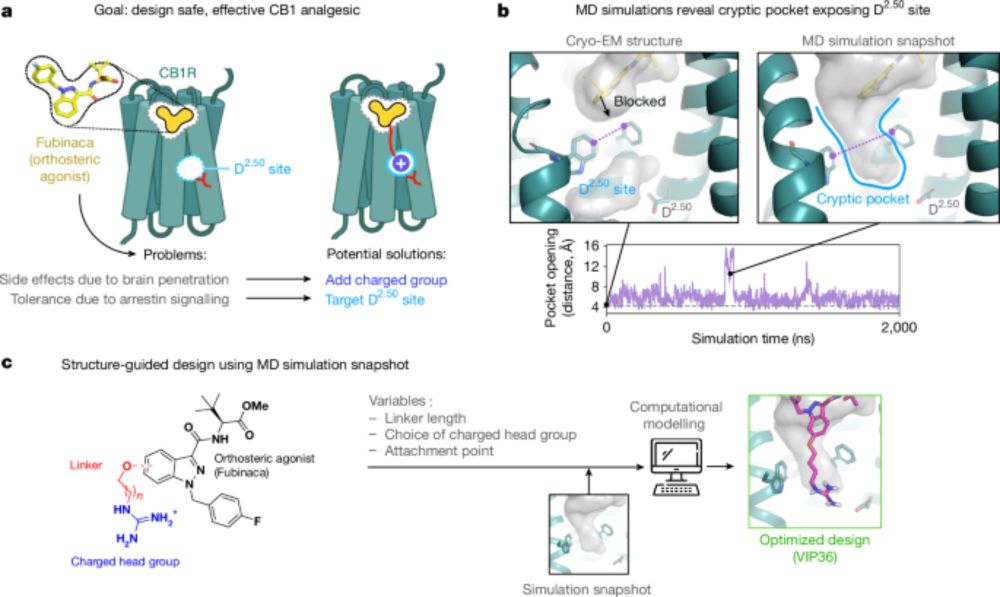
A cryptic pocket in CB1 drives peripheral and functional selectivity - Nature
A peripherally restricted CB1 agonist (VIP36) targeting a cryptic receptor pocket was developed, showing high efficacy in mouse pain models with minimal side effects and tolerance, potentially revolut...
www.nature.com
March 5, 2025 at 4:48 PM
Excited to present the result of a fantastic collaborative effort - funded by the National Institutes of Health, including the NIH HEAL Initiative, to develop safer analgesic drugs. www.nature.com/articles/s41...
Reposted by Lauren Slosky
Large scale investigation of GPCR molecular dynamics data uncovers allosteric sites and lateral gateways
www.nature.com/articles/s41...
www.nature.com/articles/s41...

Large scale investigation of GPCR molecular dynamics data uncovers allosteric sites and lateral gateways - Nature Communications
GPCR dynamics are critical for signal transmission into the cell. Here, the authors probe receptor plasticity using molecular dynamics simulations, enabling the detection of allosteric sites and drug ...
www.nature.com
March 2, 2025 at 9:18 AM
Large scale investigation of GPCR molecular dynamics data uncovers allosteric sites and lateral gateways
www.nature.com/articles/s41...
www.nature.com/articles/s41...
Reposted by Lauren Slosky
We @chronicle.com reported on Friday that applications for F31 diversity fellowships had been withdrawn.
Now, multiple scholars tell me their applications have been re-assigned to their original study sections, in a reversal of instructions NIH officials gave reviewers last week. #AcademicSky
Now, multiple scholars tell me their applications have been re-assigned to their original study sections, in a reversal of instructions NIH officials gave reviewers last week. #AcademicSky
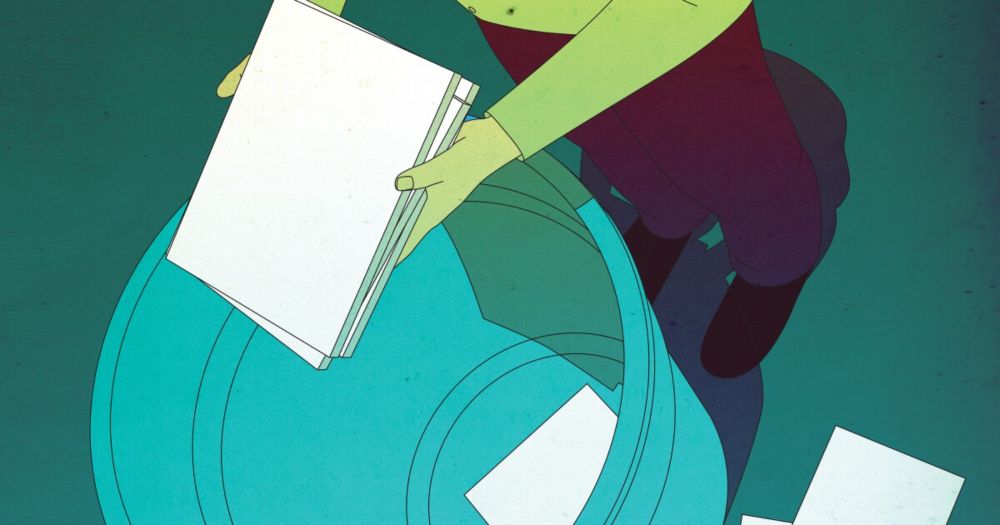
‘We’re Being Punished’: NIH Tosses Some Grant Applications From Minority Researchers
The sudden withdrawal affects early-career scholars who applied for a prestigious federal grant with a diversity notation — flagging that they came from underrepresented backgrounds.
www.chronicle.com
February 10, 2025 at 11:58 PM
We @chronicle.com reported on Friday that applications for F31 diversity fellowships had been withdrawn.
Now, multiple scholars tell me their applications have been re-assigned to their original study sections, in a reversal of instructions NIH officials gave reviewers last week. #AcademicSky
Now, multiple scholars tell me their applications have been re-assigned to their original study sections, in a reversal of instructions NIH officials gave reviewers last week. #AcademicSky
Reposted by Lauren Slosky
I am not normally an alarmist, but these are not normal times. This change would cripple research infrastructure at hundreds of US institutions, and threatens to end our global superiority in scientific research.
grants.nih.gov/grants/guide...
grants.nih.gov/grants/guide...
NOT-OD-25-068: Supplemental Guidance to the 2024 NIH Grants Policy Statement: Indirect Cost Rates
NIH Funding Opportunities and Notices in the NIH Guide for Grants and Contracts: Supplemental Guidance to the 2024 NIH Grants Policy Statement: Indirect Cost Rates NOT-OD-25-068. OD
grants.nih.gov
February 8, 2025 at 2:58 AM
I am not normally an alarmist, but these are not normal times. This change would cripple research infrastructure at hundreds of US institutions, and threatens to end our global superiority in scientific research.
grants.nih.gov/grants/guide...
grants.nih.gov/grants/guide...

